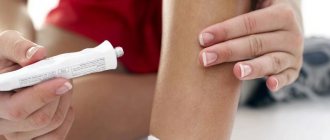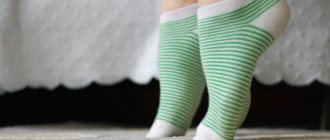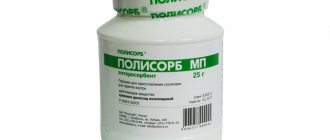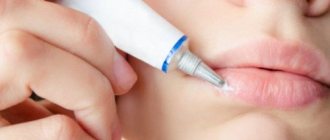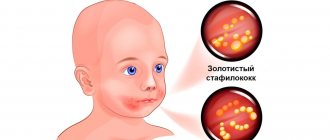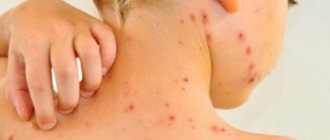Ointments for bruises and other injuries not only eliminate pain, but also counteract inflammatory processes. They also dilate blood vessels, warm the tissue and promote its nutrition. Therefore, the therapeutic effect occurs within the first 30-40 minutes after application. The most popular drugs for adults and children are discussed below
Ointment for bruises with an analgesic effect: “Diclofenac”
The active substance diclofenac is included in a number of analogue drugs:
- "Voltaren";
- "Diclofenac"
- "Ortofen".
These are common anti-inflammatory drugs belonging to the non-steroidal group. For use by adults and children over 6 years of age. Apply to the skin 1 to 4 times a day. Has a local anesthetic effect.
Side effects are rare. They may be associated with dermatitis, erythema, and attacks of bronchial asthma. Use during pregnancy is permissible only in the first and second trimesters. Moreover, a preliminary consultation with a doctor is required. You can buy all diclofenac-based ointments without a prescription.
Introduction
Damage to soft tissues accompanies human life.
A bruise is a closed mechanical damage to soft tissues caused by short-term exposure to a damaging factor, which is not accompanied by the formation of wounds. When a bruise occurs, small vessels always rupture, followed by hemorrhage, the severity of which can vary. Damage to soft tissues, regardless of the cause that caused them, constitutes the majority of visits to primary health care institutions. Bruises usually occur when falling or hitting hard objects. In children of the first years of life, household and play injuries, bruises of the soft tissues of the face and neck predominate. At older ages, the main types of injuries are transport, sports, and street injuries [1]. Damage to superficial soft tissues is always accompanied by swelling of the injury site as a result of the skin being soaked in lymph, blood and local aseptic inflammation. The amount of swelling depends on the area of damage to the subcutaneous tissue at the site of the injury. For example, in the area of the cranial vault, due to the thin layer of subcutaneous fat, edema is insignificant, while even mild bruises of the face are accompanied by the development of pronounced edema [2]. Bleeding that continues deep into the tissue often leads to additional trauma to adjacent tissues as a result of their compression, which is accompanied by a gradual increase in pain and dysfunction. A bruise sometimes accompanies other injuries (fracture, etc.), so you should always exclude more complex injuries and evaluate the consequences of injuries [2, 3]. Soft tissue injuries are accompanied by pain of varying intensity. Thus, with bruises of large nerves and their endings, the pain is always sharp, shooting. With bruises of the torso and limbs (shoulder, thigh), tense hematomas can form, with bursting pain, sometimes with superficial numbness.
Treatment of soft tissue bruises is traditionally aimed at eliminating the above symptoms and excluding more severe pathology [4]. Currently, there are treatment standards - clinical guidelines for the provision of emergency medical care for soft tissue injuries, where a special place is given to the issues of immobilization, wound care and pain relief [5]. The administration of opioid and non-opioid analgesics is recommended in combination with antihistamines (metamizole sodium, trimeperidine, diphenhydramine). It is necessary to perform immobilization as soon as possible. Even with minor injuries, it is better to apply a tight bandage to the bruised area or immobilize with an orthosis. This will ensure peace of the bruised segment, normalize microcirculation, and reduce motor activity. Some orthotic products have a micromassage effect, which also has a beneficial effect on reparative processes. Along with this, analgesic therapy is carried out. These activities must be performed within the first 3 days. Then it is possible to use warming procedures and physiotherapeutic measures. Local therapy with ointments and gels can be used from the 1st day if they do not have a warming effect and do not increase vascular permeability.
Soft tissue bruises, and therefore pain, are inherently interconnected. Pain is a unique psychophysiological state of a person that occurs as a result of exposure to super-strong or destructive stimuli and causes functional or organic disorders in the body. Moreover, pain is subjective in nature, its perception is based on personal experience associated with damage in the early period of life. Its perception is determined not only by the source of pain, but also by such, at first glance, non-obvious factors as the psychophysical and emotional characteristics of the individual, his cultural level, family training and many others. Most often it is characterized as a psychophysical state of a person, which is a characteristic reaction to various organic and functional disorders caused by the action of various stimuli. Pain is both a physical sensation and an emotional reaction to it. Pain expert Margot McCaffrey's pithy definition is "anything that a patient says hurts them."
The functioning of the nociceptive system is mediated by neurochemical mechanisms realized by endogenous peptides and mediators, including histamine, substance P, kinins, prostaglandins, leukotrienes, potassium and hydrogen ions [4–6]. When pain occurs, the processes of hypercoagulation and lipid peroxidation are activated, the content of proteolytic enzymes increases, which causes tissue destruction. Pain contributes to the development of tissue hypoxia, degenerative processes and disruption of microcirculation in tissues. This, in turn, increases the alteration of injured tissues [7].
Thus, pain is a complex psychophysiological phenomenon, which, both from an ethical and legal standpoint, requires treatment aimed at relieving pain [8]. Understanding the complexity of its nature, mechanisms of development and regulation allows us to take a differentiated approach to the issue of choosing analgesic therapy.
One of the most effective means of protecting peripheral nociceptors that does not cause depression of vital functions are non-steroidal anti-inflammatory drugs (NSAIDs). The modern concept of effective pain relief for bruises and other types of injuries involves a multimodal approach - influencing various parts of the pain impulse. In this regard, it is advisable to combine the administration of NSAIDs with opiates or opioids for severe pain syndrome, for example, in case of shockogenic traumatic injuries.
Nonsteroidal anti-inflammatory drugs are the drugs of choice for the treatment of mild to moderate pain. Their anti-inflammatory effect is based on inhibition of cyclooxygenase (COX). One of the representatives of NSAIDs is ketoprofen, produced in various forms (tablets, injections, external ones). The triple effect - anti-inflammatory, analgesic and antipyretic - is due to blocking the enzymes COX-1 and COX-2 and, partially, lipoxygenase, which leads to suppression of the synthesis of prostaglandins (including in the central nervous system, most likely in the hypothalamus) and thromboxanes. Ketoprofen stabilizes in vitro
and
in vivo
liposomal membranes, at high concentrations
in vitro
suppresses the synthesis of bradykinin and leukotrienes. It does not have a negative effect on the condition of articular cartilage [9].
From the point of view of the ratio of anti-inflammatory and analgesic activity, ketoprofen seems to be the optimal molecule. Thus, according to an experimental study using a model of toothache, ketoprofen has the most pronounced anti-inflammatory effect compared to many NSAIDs, while the clinical effectiveness indicator (total reduction in pain after 4 hours) is the greatest for ketoprofen [10]. It is important to note that these experimental data were confirmed by data from a meta-analysis of 13 RCTs: with regard to the relief of moderate and severe pain, ketoprofen is significantly superior to diclofenac and ibuprofen [11].
Despite the fact that ketoprofen is a “traditional” non-selective NSAID, it is less capable of causing NSAID-associated gastrointestinal and cardiovascular complications - data from a Finnish population-based study assessing the causes of 9191 events in the upper gastrointestinal tract ( including cases of bleeding, ulcers and perforation). According to the results obtained, the likelihood of developing serious gastrointestinal complications when using ketoprofen was lower compared to other NSAIDs, such as diclofenac. Ketoprofen demonstrated a similar or even lower risk of developing gastrointestinal pathology than a number of selective NSAIDs [9–11]. The minimal negative effect of ketoprofen on the cardiovascular system has been demonstrated in a number of large-scale epidemiological studies.
In a study of the analgesic effect of ketoprofen in the acute period of injury in victims with various skeletal injuries, the onset of analgesic effect was noted within 12.2 ± 2.6 minutes after intramuscular application of 100 mg of ketoprofen. The use of 200 mg reduced the wait for the development of analgesia to 8.2±2.2 minutes. At the same time, in patients with severe musculoskeletal injury, ketonal was used at a dose of 200 mg in combination with intravenous tramadol (100 mg), and the analgesic effect was realized in 5.8 ± 0.9 minutes, which was faster compared to tramadol monotherapy at the same dosage (6.0±1.2 min) [12].
Purpose of the study:
determine the effectiveness of analgesic therapy for bruises of the upper and lower extremities.
What to apply to a severe bruise: “Viprosal”
This medicine contains the venom of a common viper and auxiliary components - turpentine, camphor and silicylic acid, which provide additional heating of the affected area.
The product serves as an analgesic, inhibits inflammatory processes, and also improves tissue nutrition by dilating blood vessels. You can buy the product without a prescription and can be taken by adults and children over 12 years old.
Side effects include allergic reactions, including itching and swelling. It is worth remembering that Viprosal cannot be used during pregnancy and breastfeeding. It is important to avoid contact of poison with mucous membranes, including eyes, and damaged areas of skin (wounds, abrasions, ulcers).
Main symptoms of injuries to joints, muscles, tendons
A bruise is damage to tissues or organs that preserves the integrity of the skin. Typically, such an injury is accompanied by pain, shaking and partial necrosis of the tissues that were hit. Bruises often occur when falling from a height, as a result of a blow caused by a blunt object. The skin, subcutaneous tissue, soft tissues, and the bones that adjoin them are most susceptible to this type of injury. 57
With severe bruises, local tissue swelling, rupture of blood vessels, and hematoma (subcutaneous hemorrhage) appear. The functions of the injured organ are limited as the hematoma and edema increase, while human activity becomes difficult and painful. 57
An injury of similar origin is a sprain of muscles, ligaments, and tendons. The main reason for the occurrence of such injuries is the performance of actions that significantly exceed the physiological volume of the musculoskeletal organ (muscle, joint, tendon). One of the reasons for such an injury may be movement of the joint in an unusual direction. Its main manifestations are limited to swelling, pain, and hematoma. 57
Ointment for bruises and injuries: “Apizartron”
"Apizartron" contains bee venom and auxiliary components. It has a pronounced analgesic effect, helps with sprains and bruises. Used to warm up muscles, including during sports activities. Stimulates blood circulation, eliminates symptoms of neuritis and sciatica, as well as rheumatic joint pathologies.
You can buy the ointment at the pharmacy without presenting a prescription. It can be used by both adults and children over 12 years of age (over 6 - with caution). It is not allowed to use during any trimester of pregnancy and during breastfeeding.
If you have an individual intolerance to bee venom, a number of allergic reactions may occur, including redness, swelling, itching and rash. In these cases, it is necessary to replace the drug.
Material and methods
A pilot prospective comparative study was conducted, which included 54 patients with soft tissue contusion of the shoulder (n=27) and hip (n=27). Bruises in all patients were characterized by the formation of subcutaneous or intradermal hemorrhage, swelling of soft tissues without muscle damage. Inclusion criteria
: age 25–50 years, compensated comorbid pathology.
Non-inclusion criteria
: decompensated concomitant pathology or requiring constant medical support; severe soft tissue damage; the injury is more than 1 day old; self-administration of analgesics and other medications for pain relief before the initial visit. All patients signed informed consent to participate in the study.
During the initial examination, all patients underwent an ultrasound examination of the injury site to exclude more severe pathology. Soft tissue swelling was assessed at each visit using the circumference of the injured limb segment, measured in the upper, middle, and lower thirds, and compared with the uninjured limb. Functional recovery was assessed by the patient's ability to flex the elbow and shoulder joint and squat at least 10 times, as well as hold a 2.5 kg load for more than 2 minutes in an outstretched arm.
Depending on the form of the drugs received, patients were divided into 8 groups. Group 1 (n=6) - patients with upper limb injuries who received ketoprofen tablets (Ketonal®) at a dosage of 100 mg once a day; Group 2 - patients with damage to the upper limb (n=6) who received diclofenac tablets at a daily dosage of 100 mg; Group 3 (n=7) - patients with damage to the lower extremity who received ketoprofen tablets at a dosage of 100 mg once a day; Group 4 (n=7) - patients with lower limb injuries who received diclofenac tablets at a dosage of 100 mg; Group 5 (n=7) - patients with injuries to the upper limb, for whose supervision they used the injection form of ketoprofen at a daily dosage of 100 mg; Group 6 (n=7) - patients with injuries to the upper limb, in whose treatment an injectable form of diclofenac 100 mg was used; Group 7 (n=7) - patients with injuries to the lower limb who received ketoprofen by injection at a dose of 100 mg; Group 8 (n=7) - patients with injuries to the lower limb and the use of an injectable form of diclofenac.
In all patients, in addition to analgesic therapy, on the 1st day the injury site was immobilized with a tight bandage and cooling procedures were applied. At the second visit (on the 2nd day and daily thereafter), the intensity of pain was assessed according to VAS, and the severity of edema. Treatment and monitoring of patients was stopped when a stable analgesic effect was achieved (according to VAS), there was no increase in soft tissue edema, and limb function was restored.
Buy a good ointment for bruises: “Finalgon”
The drug "Finalgon" contains 2 active ingredients at once - nicoboxil and nonivamide. Therefore, it is considered one of the best remedies for relieving pain and counteracting inflammatory processes. Causes a local irritation reaction and quickly relieves pain in the affected areas.
It is used for the symptomatic treatment of various pathologies - lumbago, arthritis, bursitis, acute low back pain, sciatica, arthralgia, for the treatment of the consequences of sports injuries and myalgia associated with increased physical activity. Also used to warm up muscles before starting a workout.
You can buy the product in a pharmacy even without a doctor’s prescription at a price of 450 rubles per 35 g package. It is worth remembering the possible side effects associated with shortness of breath, burning, paresthesia, cough, and allergic reactions. It is also important to understand that the gel should not be used by children under 17 years of age inclusive. Pregnant and breastfeeding women can use the ointment, but only if absolutely necessary and in consultation with a doctor.
First aid for bruises
Timely and correct first aid measures taken in the first 24 hours after an injury will help to recover faster, cope with pain and reduce the consequences of the injury.
What to do if you are injured[1]:
- assess the condition, make sure there are no serious injuries - dislocations or fractures of the limbs;
- ensure rest, as physical activity on the injured arm or leg can aggravate the situation;
- cool the injury site with ice or a cold compress - this will help reduce pain, reduce swelling, and prevent bruising;
- if necessary, you can apply a compression bandage;
- if the bruise is extensive and accompanied by significant swelling, and the bruise is located on the arm or leg, then to facilitate the outflow of blood and lymph from the affected area, it is worth raising the limb above the level of the head while resting;
- use non-steroidal anti-inflammatory drugs in the form of gels, ointments or creams to reduce pain and swelling.
A bruise can have serious health consequences, so regardless of the severity of the injury, you should consult a doctor.
article 2
Ointment for bruises and hematomas: “Capsicam”
The composition of Kapsicam ointment includes several active ingredients, including nonivamide, dimethyl sulfoxide, turpentine, camphor. The ointment warms up the affected area well, prevents the development of inflammatory processes, and gives a quick analgesic effect. Dilates blood vessels, saturates tissues with blood, which leads to rapid recovery. The cessation of pain is observed within 3-6 hours, and the first results are noticeable after 30 minutes.
You can buy the ointment at a pharmacy without presenting a doctor's prescription. It can only be used by adults; it is prohibited for children. Also, Capsicam should not be used by pregnant and lactating women. It is important to remember about possible side effects associated with allergic manifestations (including itching, swelling).
Since the components of the drug have a warming effect, they lead to an increase in the temperature of the affected area by 2-3 degrees, which is normal. In this case, you should avoid getting the product on mucous membranes, including eyes, and wounds.
Signs of bruise
A bruise is a closed injury, the presence of which can be judged with confidence only after some time has passed. If a cut, abrasion or bite is immediately visible - bleeding appears or ichor appears, then the bruise may not show itself in the first minutes or even hours. The first signs of a bruise are:
- pain at the site of injury;
- when you try to move, the bruised area hurts more;
- tissue swelling appears;
- the skin at the site of the bruise changes its color - it takes on a shade from red to purple.
The color of the bruised area is affected by the degree of subcutaneous hemorrhage. The greater the number of vessels that are damaged, the more pronounced the hematoma. Tears in muscle fibers cause the most pronounced swelling and pain. At the same time, it is important to remember that the larger the damaged vessel, the more pronounced it will be manifested by subcutaneous hemorrhages.
